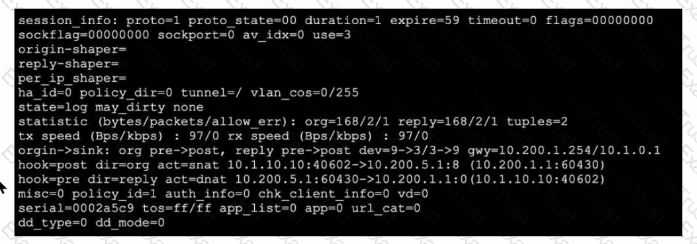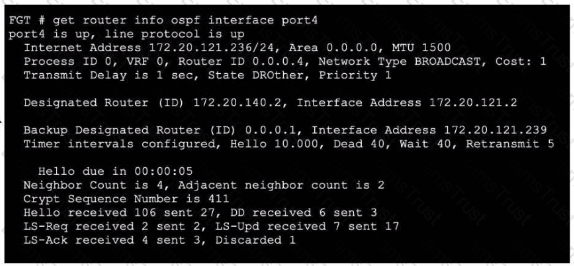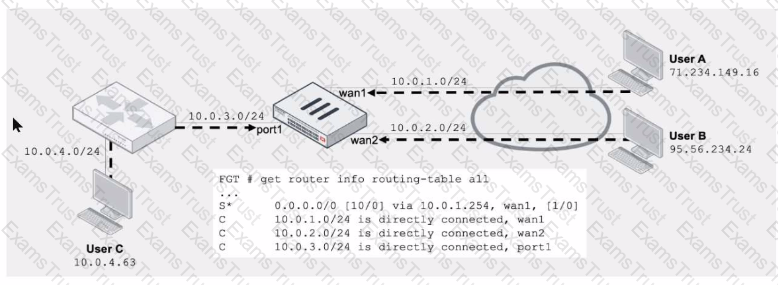Which statement about IKEv2 is true?
Which authentication option can you not configure under config user radius on FortiOS?
Refer to the exhibit, which shows a session entry.

Which statement about this session is true?
Which exchange lakes care of DoS protection in IKEv2?
Which two statements about Security Fabric communications are true? (Choose two.)
Exhibit.

Refer to the exhibit, which shows two entries that were generated in theFSSO collectoragent logs.
What three conclusions can you draw from these log entries? {Choose three.)
Refer to the exhibit, which shows a truncated output of a real-time LDAP debug.

What two conclusions can you draw from the output? (Choose two.)
Exhibit.

Refer to the exhibit, which shows the output of a session. Which two statements are true? (Choose Iwo.)
Refer to the exhibit, which shows the output of get router info bgp summary.

Which two statements are true? (Choose two.)
Refer to the exhibit, which shows the output ofa debug command.

Which two statements about the output are true? (Choose two.)
Refer to the exhibit, which shows the output of a policy route table entry.

Which type of policy route does the output show?
Refer to the exhibit.

Assuming a default configuration, which three statements are true? (Choose three.)